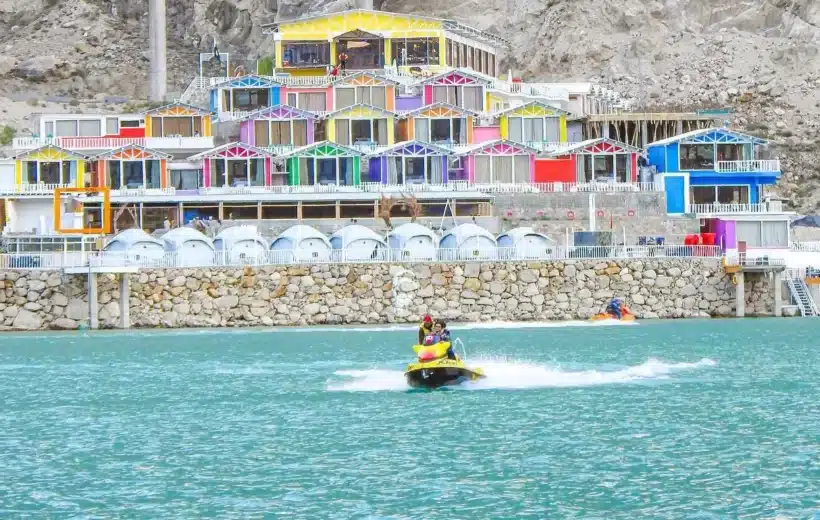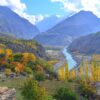Discovering the Enchanting Hunza Valley
Discovering the Enchanting Hunza Valley: A Comprehensive Travel Guide
Nestled in the majestic Karakoram mountains of Northern Pakistan, the Hunza Valley is a captivating paradise that boasts breathtaking natural beauty, rich cultural heritage, and a unique way of life. This comprehensive travel guide will help you uncover the hidden gems of this enchanting valley and make the most of your visit.
Table of Contents
- Introduction to the Hunza Pakistan
- The Longevity of Hunza People
- Exploring the Valley’s Natural Beauty
- The Rich Cultural Heritage of Hunza
- The Unique Lifestyle of the Hunza People
- Tasting the Flavors of Hunza’s Organic Cuisine
- Engaging in Adventure Activities in Hunza
- Visiting the Historic Forts of Altit and Baltit
- A Guide to Traveling to and Staying in Hunza Pakistan
- Conclusion: A Unique Experience Awaits in Hunza Pakistan
1. Introduction to the Hunza Pakistan (Hunza Valley)
Situated at an elevation of 2438 meters in the Gilgit-Baltistan region, the Hunza Valley is a serene sanctuary, often referred to as “heaven on earth.” With its awe-inspiring landscapes, crystal-clear rivers, lush green fields, and vibrant local traditions, it is no wonder that the valley has become a favorite destination for tourists, trekkers, and adventure enthusiasts alike.
The Hunza Valley is divided into three main regions: Upper Hunza, Central Hunza, and Lower Hunza, each boasting its own unique attractions and charm. The valley’s isolation, coupled with its high altitude and breathtaking year-round scenery, has led to comparisons with the mythical Shangri La described in James Hilton’s 1933 novel “Lost Horizon.”

2. The Longevity of the Hunza People
One of the most intriguing aspects of the Hunza Valley is the purported longevity of its inhabitants. The Hunza people have long been the subject of fascination due to their exceptional health, vitality, and disease-free lives. While there is no definitive answer to the exact age of the oldest Hunza residents, it is widely accepted that their daily routines, which involve ample physical activity and a predominantly plant-based diet, contribute significantly to their overall well-being and longevity.
3. Exploring the Valley's Natural Beauty
The natural beauty of the Hunza Valley is truly unparalleled. From the striking turquoise waters of Attabad Lake to the dramatic peaks of the Passu Cones, the valley offers an abundance of stunning landscapes to explore. The diverse range of flora and fauna found in the region, including the elusive snow leopard, further adds to its enchantment.
During the summer months, the valley’s pleasant weather and picturesque surroundings make it an ideal destination for outdoor activities such as trekking, camping, and photography. In contrast, the winter season transforms the Hunza Valley into a snowy wonderland, offering opportunities for skiing and other winter sports.
4. The Rich Cultural Heritage of Hunza
The Hunza Valley is home to a unique cultural heritage that sets it apart from the rest of Pakistan. The valley’s inhabitants, known as the Hunza people, follow the Ismaili branch of Islam, which is considered less conservative than the majority of the country. This is reflected in the local customs and traditions, as well as the architecture and art found in the region.
One of the most fascinating aspects of Hunza’s cultural heritage is its historical forts, such as Altit and Baltit Fort. These ancient structures, built in the 8th and 11th centuries respectively, served as royal residences and bear witness to the valley’s rich history as a former princely state. A visit to these forts offers a glimpse into the lives of the Hunza people, their art, and architecture, as well as the influence of the Ismaili faith on the region.

5. The Unique Lifestyle of the Hunza People
The lifestyle of the Hunza people is characterized by simplicity and harmony with nature. Their daily routines revolve around agricultural activities, tending to their livestock, and engaging in community life. The strong emphasis on physical activity, combined with their predominantly plant-based diet, is believed to contribute to their exceptional health and vitality.
The Hunza people are known for their warm hospitality and zest for life, making them some of the happiest people on earth. Their passion for music, dance, and storytelling further adds to the unique charm of the valley and creates a welcoming atmosphere for visitors.
6. Tasting the Flavors of Hunza's Organic Cuisine
The Hunza Valley is renowned for its delicious, organic cuisine, which is believed to be a key factor in the longevity of its inhabitants. The valley’s fertile soil and favorable climate allow for the cultivation of a wide variety of fruits, vegetables, and grains, which form the basis of the local diet.
Some of the most popular dishes in Hunza include apricot, cherry, and walnut-based meals, as well as traditional bread known as chapati. The valley is also famous for its honey, which is used not only as a natural sweetener but also for its medicinal properties.
In recent years, the Hunza people have also embraced the concept of farm-to-table dining, with many local restaurants and guesthouses serving meals prepared using fresh, locally sourced ingredients.
7. Engaging in Adventure Activities in Hunza
For those seeking a more adventurous experience, the Hunza Valley offers a plethora of exciting activities to suit all interests and abilities. From trekking to the high-altitude Rush Lake, one of the highest alpine lakes in the world, to crossing the Hussaini Bridge, dubbed as the “world’s most dangerous bridge,” there is no shortage of thrilling pursuits to enjoy in the valley.
Other popular adventure activities in the region include mountain biking, rock climbing, and rafting, as well as exploring the valley’s numerous glaciers and waterfalls.

8. Visiting the Historical Forts of Altit and Baltit
A visit to the Hunza Valley would not be complete without exploring the historical forts of Altit and Baltit. These ancient structures offer a fascinating glimpse into the region’s rich history and cultural heritage, as well as providing stunning views of the surrounding landscape.
Altit Fort, built in the 8th century, has been fully refurbished by an all-female team of carpenters through the innovative Ciqam Project, which aims to empower local women by providing them with training in traditionally male-dominated professions.
Baltit Fort, constructed in the 11th century, also offers a wealth of history and architectural interest, as well as panoramic views of the Karakoram Range and the iconic Baltit Fort.
9. A Guide to Traveling to and Staying in Hunza Valley
Reaching the Hunza Valley requires a combination of air and road travel, with the most common route involving a flight to Gilgit Airport, followed by a road journey to the valley. Once in Hunza, there are a variety of accommodation options available, ranging from luxurious resorts to charming guesthouses and homestays.
When planning your visit to the Hunza Valley, it is important to consider factors such as the weather, local customs, and travel logistics to ensure a smooth and enjoyable experience. Opting for a tour package from a reputable travel agency can help make your journey more convenient and organized, while also providing access to local knowledge and expertise.
10. Conclusion: A Unique Experience Awaits in Hunza Valley
The enchanting Hunza Valley is a destination like no other, offering a captivating blend of natural beauty, rich cultural heritage, and a unique way of life. Whether you are seeking adventure, relaxation, or an immersive cultural experience, the valley has something to offer everyone.
By following this comprehensive travel guide, you can make the most of your visit to the Hunza Valley and create memories that will last a lifetime. So, pack your bags, embrace the spirit of adventure, and embark on the journey of a lifetime to this magical land.






